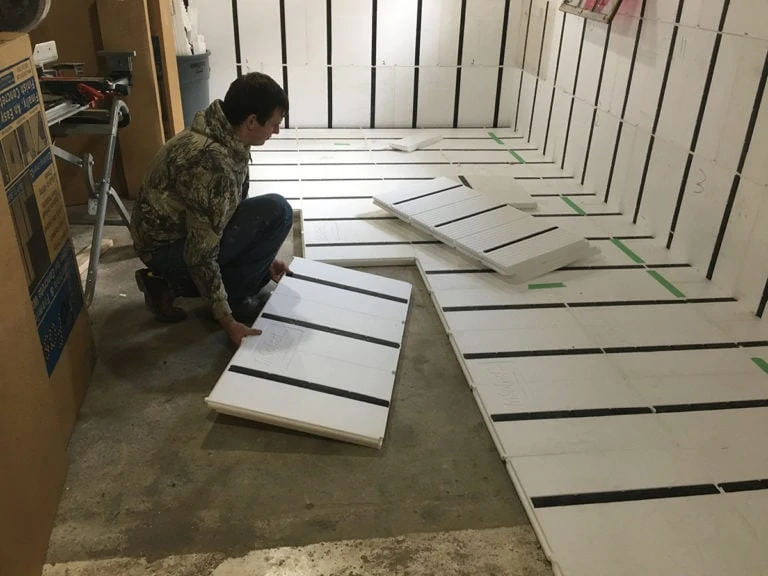One way to add value to your home is to add a new addition. An unused basement is an existing addition. Of course, the finished look is important, carpet, tile, laminate or wood: but it’s equally important to insulate the floor! Why spend the money to finish a room if it does not improve comfort and quality?
Insulating the basement floor adds comfort and additional challenges that need to be address. Basement floors are not always on the level. Building codes requires that stairs steps be the same height preventing a tripping hazard. You may have to adjust the stair treads heights or add a landing to meet building code requirements and check all existing door swings; doors may require to be rehung and/or trimmed to accommodate the new floor to ceiling height.
Water always seeks the lowest point in your home…. your basement. Make sure you have a working sump pump or back flow prevention system to keep water and sewage from getting into unwanted places. The old adage an ounce of prevention is worth a pound of cure, really means something in a basement.
Address uneven floors prior to installing any floor system, the low spots should be fixed with concrete patch or floor leveler.
Once the basement is prepped, choose an insulation to reduce heat loss and moisture transfer from the slab. InSoFast EPS foam panels provides a one-step solution to finishing a floor with embedded studs built-in to the panel. The average residential load bearing code requirement for floor system is 40psf. InSoFast easily exceeds the compressive strength requirements.
InSoFast’s insulation panels provide an easy way to insulate a cold concrete floor. The panels can be applied to every surface from floors to walls to ceilings. InSoFast is a DIYers’ dream, a simple way to install insulation, needing only a hand saw, utility knife and caulking gun.



